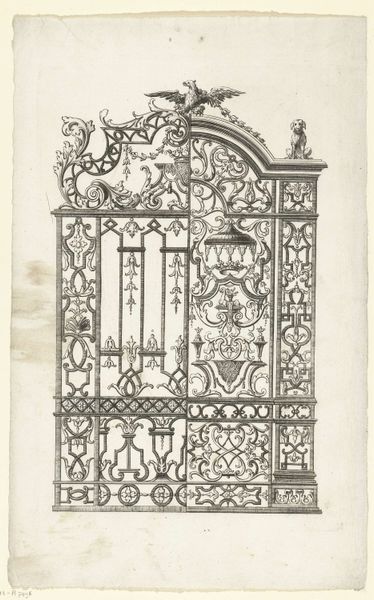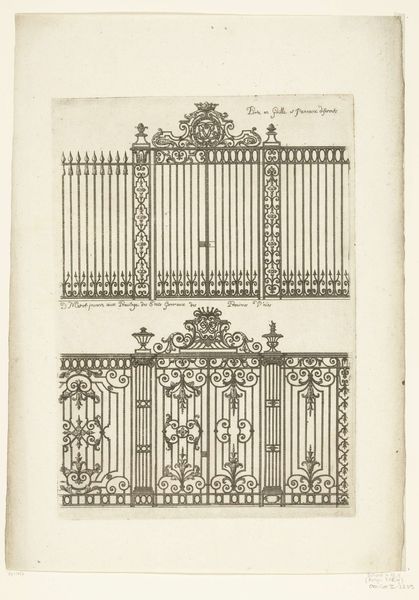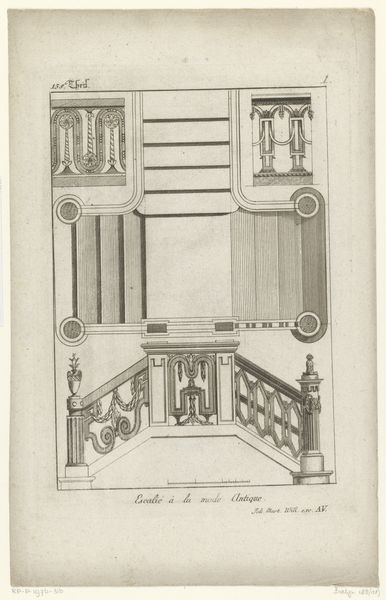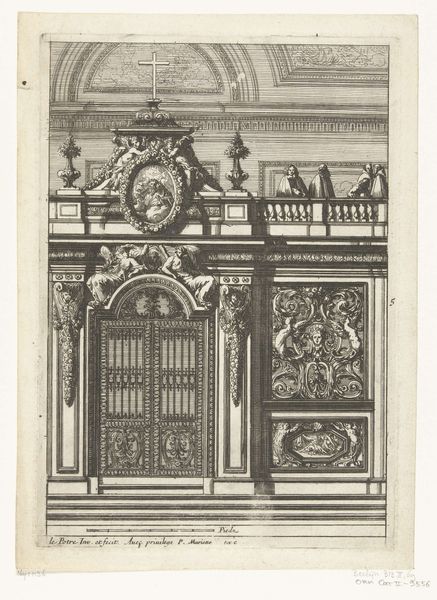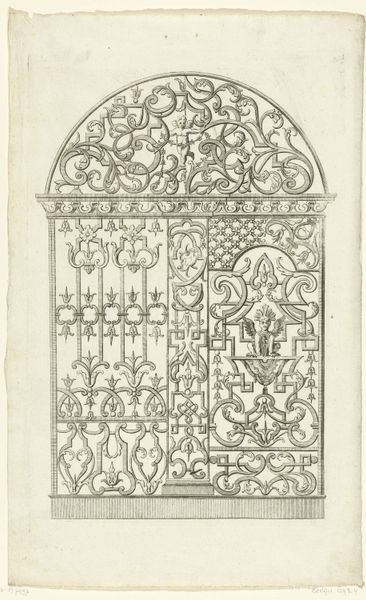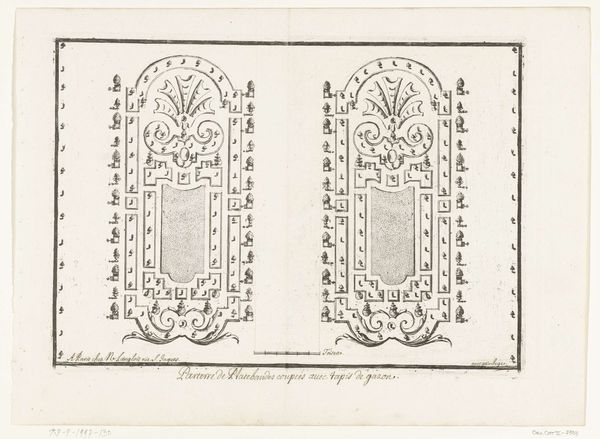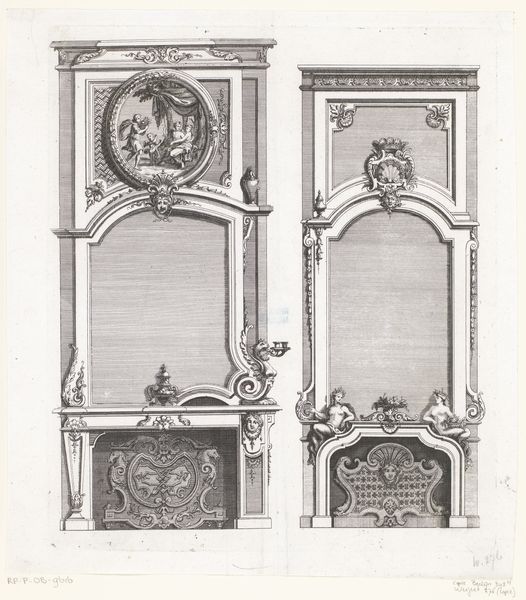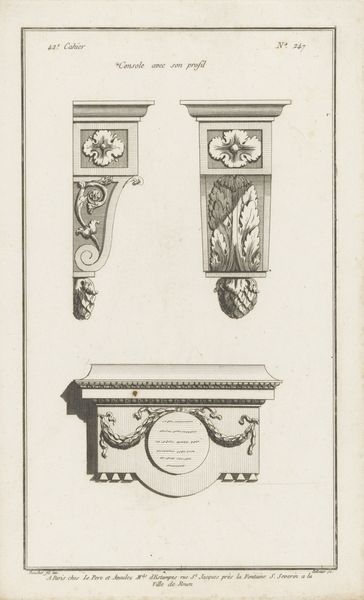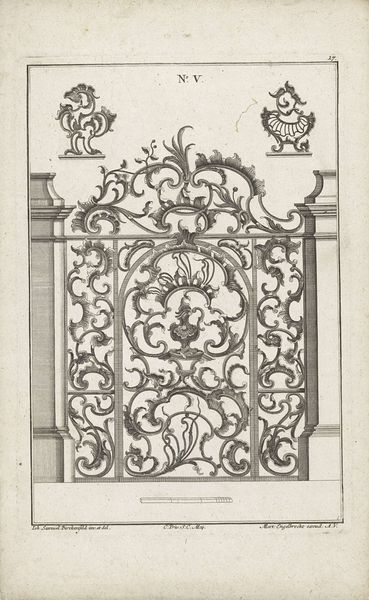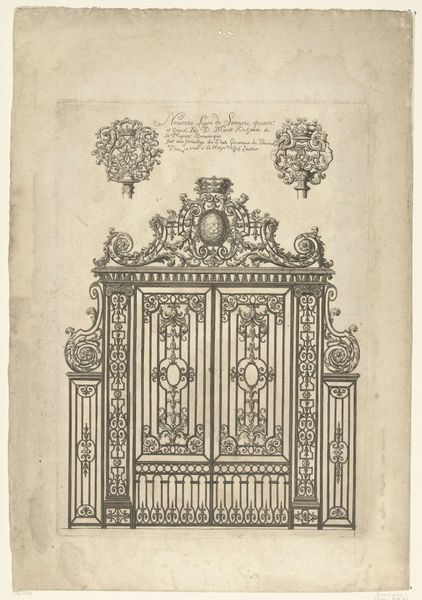
drawing, print, metal, etching, engraving, architecture
#
drawing
#
baroque
# print
#
metal
#
etching
#
etching
#
line
#
engraving
#
architecture
Dimensions: height 270 mm, width 193 mm
Copyright: Rijks Museum: Open Domain
Curator: Right, let’s take a look at this print called “Drie balkonleuningen,” or “Three Balcony Railings,” made around 1712 by Daniël Marot. It resides here in the Rijksmuseum. What are your initial thoughts? Editor: They strike me as incredibly precise and ornate! The way the light catches on all the swirling metalwork... it's almost musical. Like frozen melodies clinging to the edge of a building. Curator: Marot was a master of the Baroque style. Etching and engraving these designs allowed them to be disseminated widely, influencing ironwork across Europe. He wasn’t just an artist; he was shaping urban landscapes. Editor: Precisely! We often overlook how much design informs the built environment. This print, a seemingly simple "drawing," speaks to the materiality of architecture, the labor involved in forging such intricate metalwork, and ultimately, how design elements become accessible to all classes. Look closely, you'll find small sun faces and monograms integrated in the design... Curator: There’s something captivating about these railings existing only as possibilities on paper. They represent a bridge, literally, between imagination and tangible construction. One could ponder where they were eventually realized, adding their beauty to some grand manor. Or even to more modest dwelling. Editor: That "possibility" also raises questions of social power and influence. Marot's designs wouldn't simply be for individual appreciation, but intended for wealthy clients building opulent homes. The materials—wrought iron in this case—represent skilled craftsmanship and the labor force. Curator: Yes, these railings embody social stratification through artistic expression! But that's also where the emotional tug of art arises: they transport us to another place, another time... We get a sense of how much thought went into crafting that world, quite apart from money or position in society. It almost gives it an otherworldly atmosphere. Editor: A very good point! Examining design beyond pure aesthetics leads to broader conversations around societal influence. By appreciating Marot's labor, we value the material world around us, connecting historical context to our contemporary consumption habits. Curator: I feel I could just get happily lost tracing these metal tendrils forever... a fascinating reflection, quite apart from all its historical resonance. Editor: And perhaps next time, instead of looking down from a beautiful balcony, we'll appreciate what holds us there. Thank you.
Comments
No comments
Be the first to comment and join the conversation on the ultimate creative platform.
